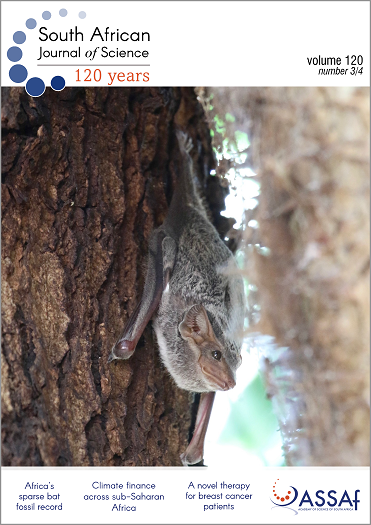Development of unsupported IrO2 nano-catalysts for polymer electrolyte membrane water electrolyser applications
DOI:
https://doi.org/10.17159/sajs.2024/16026Keywords:
iridium oxide, oxygen evolution reaction, modified Adams fusion method, polymer electrolyte membrane water electrolyser, molten salt methodAbstract
IrO2 is a current state-of-the-art catalyst for polymer electrolyte membrane water electrolyser (PEMWE) applications due to its high stability during the oxygen evolution reaction (OER). However, its activity needs to be significantly improved to justify the use of such a high-cost material. In this study, the activity of the IrO2 catalyst was improved by optimising and comparing two synthesis methods: the modified Adams fusion method (MAFM) and the molten salt method (MSM). Optimum OER performances of the IrO2 catalysts synthesised with the two synthesis methods were obtained at different temperatures. For the MAFM, a synthesis temperature of 350 °C produced the IrO2 catalyst with an overpotential of 279 mV and the highest OER stability of ~ 82 h at 10 mAcm−2. However, for the MSM, the lowest overpotential of 271 mV was observed for IrO2 synthesised at 350 °C, while the highest stability of ~ 75 h was obtained for the IrO2 synthesised at 500 °C.
Significance:
IrO2 is still currently a state-of-the-art catalyst in PEMWE due to its high stability in the highly acidic and oxidising conditions of the OER. High-performance IrO2 catalysts were successfully produced via the MAFM and MSM. Both the MAFM and MSM are simple and easily scalable for high-volume production of metal oxide catalysts. This study showed that the physical/structural properties of the IrO2 catalysts can be tailored through synthesis methods and synthesis conditions to improve their OER performance.
Additional Files
Published
Issue
Section
License

All articles are published under a Creative Commons Attribution 4.0 International Licence
Copyright is retained by the authors. Readers are welcome to reproduce, share and adapt the content without permission provided the source is attributed.
Disclaimer: The publisher and editors accept no responsibility for statements made by the authors
How to Cite
- Abstract 482
- PDF 83
- EPUB 127
- XML 180
- Peer review history 33












.png)